Shrimp
Shrimp hatching
Explore UK Fish Production Insights
Learn How to Reduce Hatchery Losses
Access Expert Strategies for Successful Aquaculture
Production Overview
Shrimp farming is a cornerstone of global aquaculture, with annual production exceeding 5 million metric tons, driven primarily by species like Penaeus vannamei (Pacific white shrimp). While shrimp farming contributes significantly to food security and economic development, survival rates in hatcheries often vary between 40% and 60%, largely due to challenges at the egg stage. Optimizing egg management through precise environmental control and advanced technologies is critical to improving survival rates and reducing production losses.
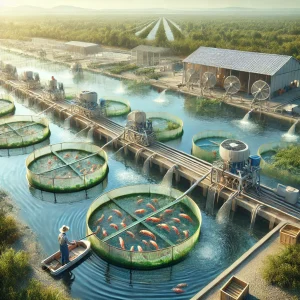
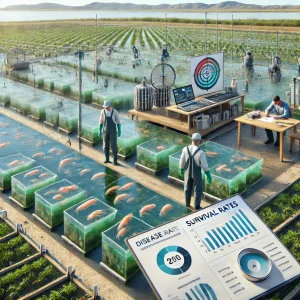
Shrimp Survival Rates
Survival Rates:
Shrimp egg survival rates typically range from 80% to 95% under optimal conditions with proper water quality, broodstock care, and disease management.
Losses:
Common losses (up to 40%) occur due to bacterial/fungal infections, poor water quality, overcrowding, and handling stress during the egg stage.
Economic Impact:
High egg mortality leads to reduced fry output, increased costs, and revenue loss, affecting production cycles. Advanced systems like AIquaboost help minimize these risks and improve profitability.
Understanding Shrimp Eggs
- Size: Shrimp eggs are microscopic, measuring approximately 0.2 to 0.3 mm in diameter.
- Incubation Time: Eggs hatch into nauplii within 12–16 hours under optimal conditions.
- Viability: Healthy broodstock can produce eggs with a hatching success rate exceeding 85%, but environmental factors heavily influence outcomes.
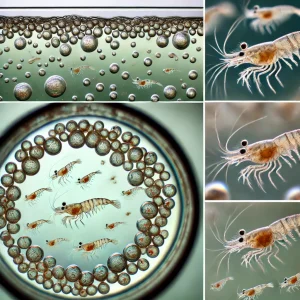
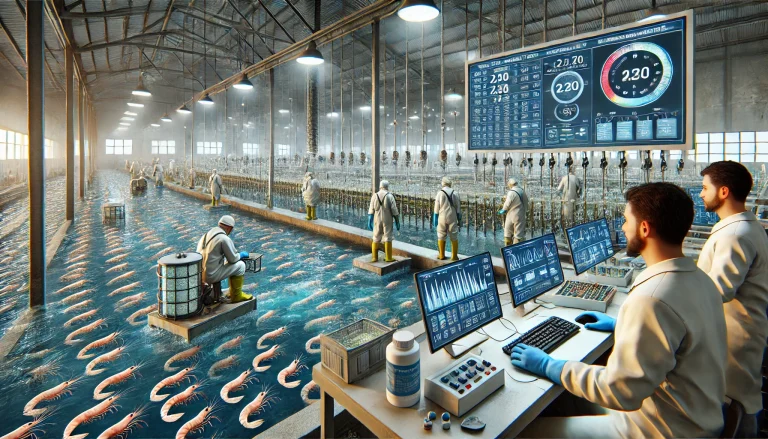
Incubation and Shrimp Egg management
Shrimp eggs are typically incubated in static tanks or flow-through systems, designed to maintain optimal water quality and prevent egg damage. These systems provide:
- Gentle aeration to keep eggs suspended and prevent clumping.
- Consistent water exchange for optimal oxygenation and waste removal.
- Stable temperature and salinity to support proper embryonic development.
Critical Factors:
1. Water Quality
- Temperature: Maintain between 28–30°C for optimal hatching.
- Salinity: Keep within 30–35 ppt for marine shrimp species.
- Dissolved Oxygen (DO): Maintain levels above 4 mg/L to support embryo respiration.
2. Flow Rate and Aeration
- Ensure gentle and continuous aeration to prevent eggs from settling and ensure even oxygen distribution.
- Maintain a steady water flow to remove waste without stressing the eggs.
3. Pathogen Control
- Apply UV sterilization and introduce probiotics to maintain a healthy incubation environment.
- AI-powered monitoring can detect early signs of pathogen risks, enabling proactive action.
Challenges in Shrimp Production
- High Mortality Rates: Survival from the egg stage to harvestable shrimp is often low due to environmental factors, disease outbreaks, and inadequate nutrition.
- Disease Pressure: Diseases like white spot syndrome virus (WSSV) and bacterial infections are major contributors to losses.
- Environmental Vulnerability: Shrimp are highly sensitive to water quality parameters like salinity, pH, and oxygen levels.
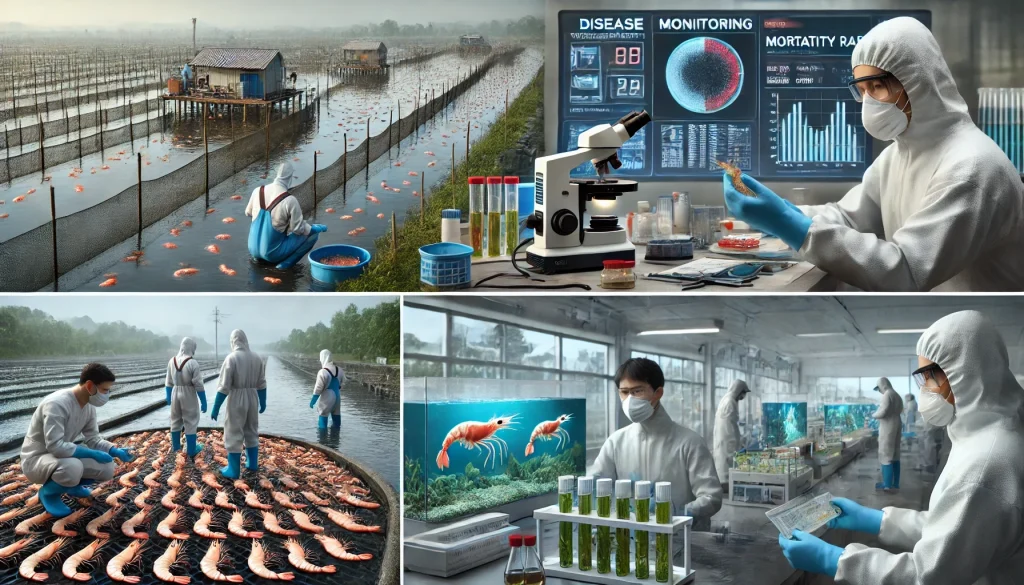
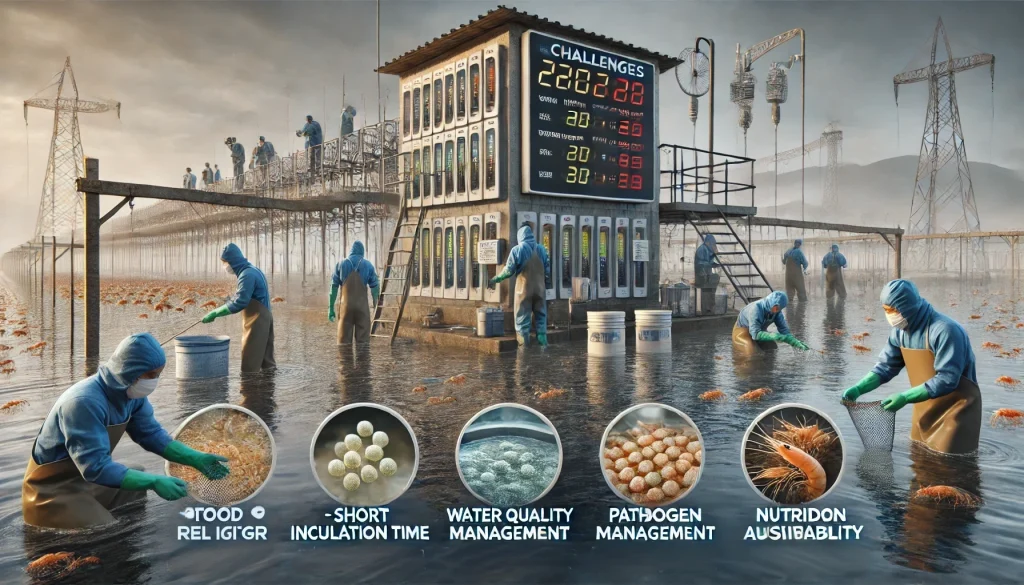
Challenges at the Shrimp Egg Stage
- Short Incubation Time: The rapid development of shrimp eggs leaves little room for error in environmental conditions.
- Water Quality Management: Fluctuations in temperature, salinity, or oxygen can quickly compromise egg viability.
- Pathogen Susceptibility: Eggs are prone to infections, especially from opportunistic pathogens like fungi and bacteria.
- Nutrient Availability: The quality of broodstock nutrition directly impacts egg quality and hatching success.
Mitigation Strategies
Water Quality Optimization
Maintaining optimal water parameters is critical:
- Temperature: Maintain between 28–30°C.
- Salinity: Keep within 30–35 ppt.
- Dissolved Oxygen (DO): Levels should remain above 4 mg/L.
- pH: Stabilize within a neutral range of 7.5–8.5.
AIquaboost Solution: Real-time monitoring and automated adjustments ensure stable water quality, preventing fluctuations that could affect egg viability.
2. Pathogen Control
- UV Sterilization: Ensures pathogen-free water supply.
- Probiotics: Introduce beneficial bacteria to suppress harmful pathogens.
- AI Prediction: AIquaboost detects environmental trends conducive to pathogen growth, enabling proactive measures like targeted chemical treatments.
3. Aeration and Circulation
- Gentle aeration ensures eggs remain suspended in the water column and receive sufficient oxygen.
- Proper circulation prevents waste accumulation and clumping of eggs.
AIquaboost Solution: Optimizes aeration and water flow to ensure uniform oxygen distribution while minimizing energy use.
4. Monitoring and Sorting
- Remove dead or unfertilized eggs promptly to maintain water quality.
AIquaboost Solution: AI-powered imaging systems automate egg assessment and sorting, reducing labor and human error.
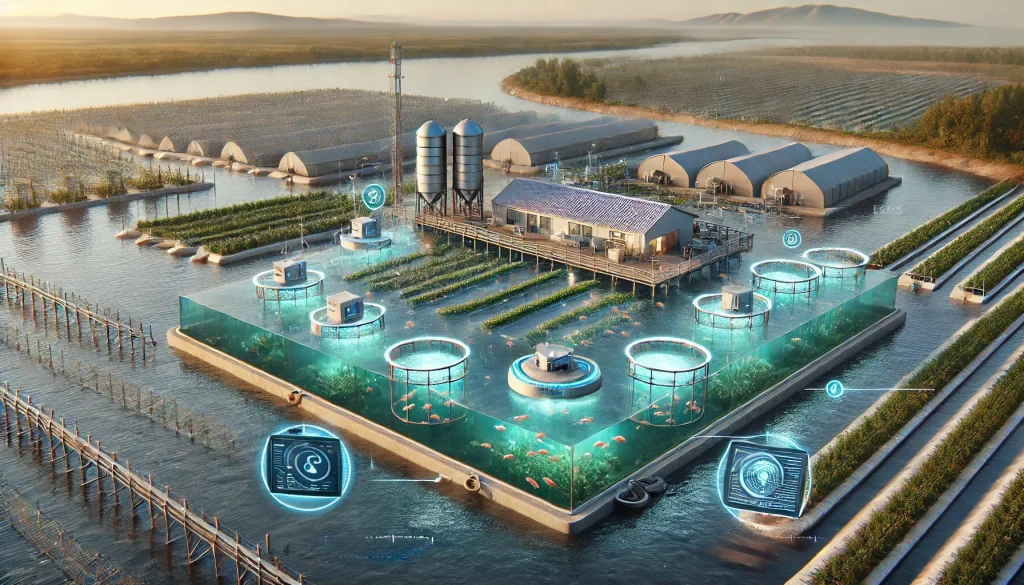
Maximize Shrimp Survival Rates with AIquaboost
AIquaboost helps hatcheries and farms unlock higher survival rates through intelligent, data-driven aquaculture management. By addressing the key factors affecting shrimp health and growth, we help producers achieve better yields, lower mortality, and greater profitability.
Contact us today to learn how AIquaboost can help improve your shrimp survival rates and optimize your production.